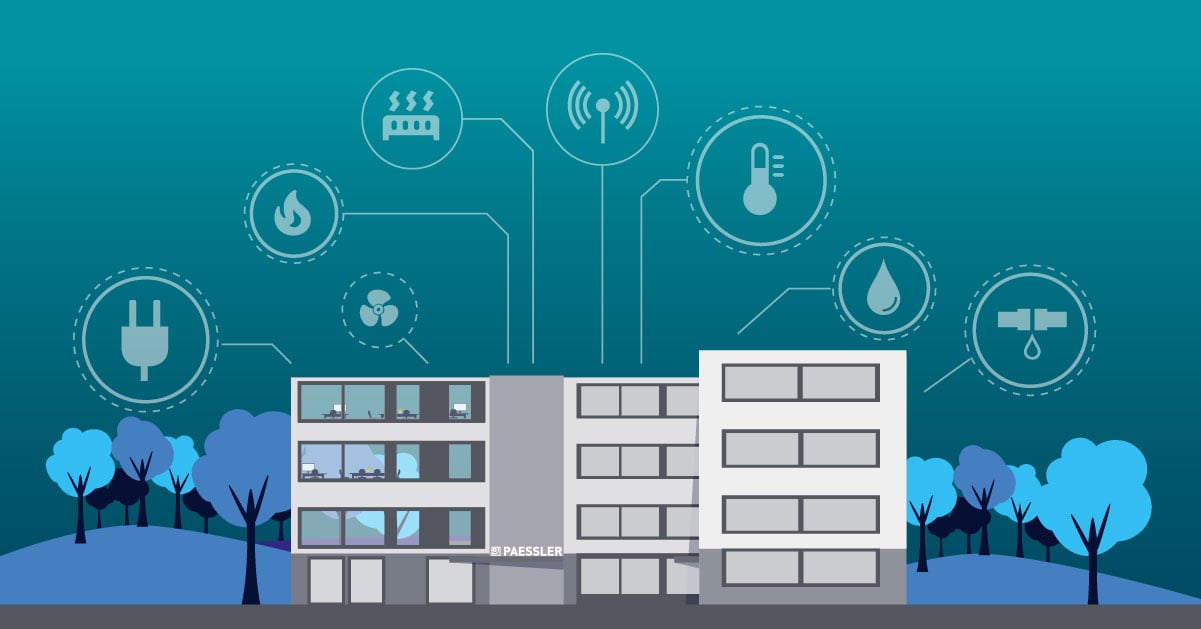12 Characteristics of a Well-Maintained LAN
 Originally published on February 23, 2017 by Paessler Editorial Team
Originally published on February 23, 2017 by Paessler Editorial Team
Last updated on January 23, 2024
•
6 minute read
Sure, your network is up and running, but is it running as well as it should? Here are 12 characteristics of a well-maintained LAN.
1. Tidy Cabling
Every network administrator has a story about a nightmare cabling closet or data center. A virtual wall of spaghetti cable, some long, some short, weaved around, through and under each other without rhyme or reason. Couplers extend some cables, bread-ties hold others together, and there are so many colors that even Henri Matisse would cry uncle. A well-maintained LAN has neat, tidy, easy to follow cables all held in place and connected intelligently, so it’s easy to troubleshoot and maintain.
2. Standardized Naming Conventions
A standard, consistently used naming convention not only helps with troubleshooting and making new connections, it can be an early warning to unauthorized devices. Is there really supposed to be a “Dave’s Scanner” in the building?
3. Standardized Equipment
Sure, you can make a network run with a different switch, router, and hub in every network closet, but that makes maintaining your LAN that much trickier. Standardized doesn’t necessarily mean all the same. One size seldom fits all, but a carefully chosen set of equipment makes support and maintenance much easier.
4. Monitoring Solutions Actually Monitored
Sure, you have a network-monitoring tool installed. Using it before something breaks is the key to a well-maintained network. The best networks are monitored for more than just up and down. Taking action on monitoring data makes sure a wellmaintained network stays that way.
5. Well-Designed Network Addressing and Subnetting
Small companies that grew bigger often suffer from crazy addressing and subnets. Did the network start on 192.168.0.1 and 255.255.255.0? What happened next? Even worse, is the network still running 10.0.0.1 and 255.0.0.0? Everyone wants good design, but new locations, closed down offices, or growth can turn once intelligent design into nonsense. Merging companies is easier with a well-designed addressing plan, even if there are overlapping addresses.
6. Documentation
Of course, you know where those cables go and why that switch is on that floor, but what about everyone else? Well-maintained documentation allows new hires, transfers and old-timers that forgot about that one thing to help keep the network well-maintained.
7. No Quick-Fixes
That hub up in marketing wasn’t supposed to be permanent, was it? Patches, bandaids and quick-fixes are sometimes necessary to keep production in production, but if you don’t go back through and make the permanent fixes, you end up with a network held together entirely by networking duct tape.
8. Hubs, Switches and Routers, Oh my!
Forget all the cute little rhymes you’ve heard about network equipment. A wellmaintained network uses the right gear for the right situation. A little hub may be sufficient for those four printers in that lab, and another switch may be perfectly suitable for that remodel, while nothing less than a data center of routers will do for that annex. Maintaining a network means constantly assessing that you are using the right tool for the job.
9. Wi-Fi
Somewhere out there, an IT department rules with such an iron fist that no one uses wireless devices on the company network, but chances are your network has plenty of them connected. Maintaining your LAN means ensuring that your wireless network is just as secure and robust as the wired network. Routinely check for signal strength, and ensure that channel overlap is kept to a minimum. Hunt down rogue access points and remove them.
10. Redundancy
No matter how well-maintained your beautiful network is, someday something will happen to it. A well-maintained network not only has backup power, but backup connectivity. Single points of failure are for poorly maintained networks.
11. Disaster Recovery
Chances are an unforeseen disaster won’t happen, but just in case it does, you should be prepared. Configurations should be backed up and routes documented. When possible, replacement equipment should be available, and ready to go. Be sure to test your disaster recovery plan regularly – during an emergency is the worst time to find out it won’t work.
12. Stability
Keeping a well-maintained network is important, but constant disruptions and changes are a hindrance for everyone. Evaluate improvements against the need and the potential disruption. Patching for security and performance is always necessary, but simply updating the old to the new can wait for the right time. Use a formal change control protocol to approve all changes and plan all scheduled maintenance to minimize impact on production.








